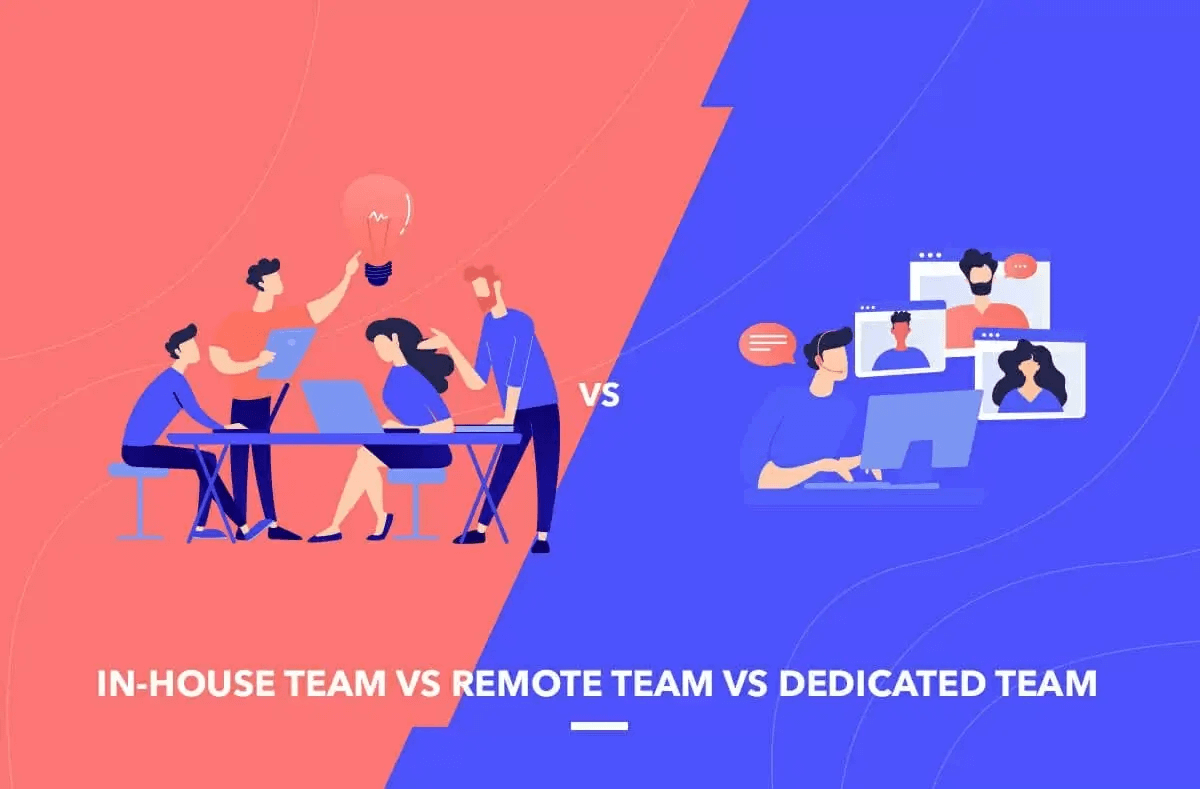In-House Team Vs. Cloud Employee: Analyzing Efficiency

One of the most critical choices businesses must make in the ever-changing world of business operations is how to organize their employees for maximum effectiveness and efficiency.
The in-house team has been the backbone of businesses for decades, but the advent of cloud computing and telecommuting has given rise to a new type of worker: the cloud employee.
In this article, we’ll examine the merits and cons of in-house teams and cloud personnel in detail, possibly shedding some light on the efficiency dilemma.
For those looking to harness the potential of cloud employees, you can find the best talent at https://cloudemployee.io.
The In-House Advantage
Employees who work within the company’s physical premises make up in-house teams. This setup has various benefits:
Face-to-Face Collaboration
The physical proximity of team members promotes effective communication and problem-solving. Employees can quickly stroll to a coworker’s workstation to discuss ideas, provide feedback, and handle problems.
Company Culture
Because of the familiar physical environment, in-house teams are likelier to create a strong sense of company culture. Regular team-building events, meetings, and interactions reinforce a shared vision and values.
Direct Management
Supervisors can keep a tight eye on the progress of in-house teams to ensure assignments are completed on time and within budget. Immediate feedback is possible, allowing for faster route corrections.
Security And Data Control
Sensitive firm data can be better safeguarded on company premises, lowering the risk of breaches and leaks.
The Cloud Employee Revolution
Cloud employees, also known as remote workers or virtual teams, work outside the typical office setting. Because of technological improvements and shifting work dynamics, this method has gained traction:
Global Talent Pool
Cloud personnel can be sourced from anywhere globally, allowing businesses to tap into a varied talent pool without regard to geography. It can result in new perspectives and creative solutions.
Flexibility And Work-Life Balance
Cloud employees frequently have more flexible work hours, which can result in a better work-life balance. This adaptability can lead to better job satisfaction and productivity.
Cost Efficiency
Hiring cloud labor is frequently more cost-effective for businesses. Office space, utilities, and infrastructure expenses can all be cut or eliminated.
Access To Niche Expertise
Businesses can find specialized talent that may be available elsewhere. It’s beneficial for professions that need technical knowledge or abilities.
Efficiency: The In-House Perspective
Direct communication, agreed goals, and the capacity to constantly monitor progress are all elements that influence efficiency within in-house teams. However, it is crucial to remember that this strategy is not without its drawbacks:
Commuting And Work-Life Balance
Employees frequently travel significantly, contributing to burnout and decreased overall efficiency. Working long hours in the office may only sometimes result in increased productivity.
Resource Constraints
In-house teams require physical resources like office space, utilities, and equipment. Scaling up these resources can be time-consuming and costly as a firm grows.
Limited Talent Pool
Companies may need help finding qualified candidates locally, particularly for specialized positions. It can result in skill set and expertise compromises.
Efficiency: The Cloud Employee Advantage
Cloud employees bring a new viewpoint to efficiency thanks to variables like flexibility, lower overhead, and access to a worldwide talent pool:
Flexibility And Productivity
Cloud employees frequently have the flexibility to determine their work hours, which leads to improved output during their most productive periods. Compared to a typical 9-to-5 schedule, this can result in higher output.
Reduced Overhead
Companies can reduce the costs of office space, utilities, and equipment. These savings can fund innovation, employee benefits, and growth.
Diverse Expertise
Companies possessing access to a global talent pool can select experts for each role, thus establishing a culture of quality and innovation.
Reduced Attrition
Because of the flexibility and work-life balance, Cloud employees frequently claim increased job satisfaction. It can result in lower turnover rates, saving businesses money on acquiring and training new personnel.
In-House Team Efficiency Metrics
To measure the impact of efficiency on both internal teams and cloud employees, you need to utilize relevant key performance indicators (KPIs) that align with the organization’s goals, strategy, and the nature of the work they are performing.
Let’s look at some key performance indicators for assessing the efficacy of both approaches:
Project Completion Rate
Project Completion Rate Calculate the percentage of projects completed within the timeframe indicated. A high completion rate shows that project management and task execution are efficient.
Response Time
Please track how long it takes team members to respond to emails, messages, or requests. A prompt reaction indicates excellent communication and proactive collaboration.
Task Turnaround Time
Calculate how long it takes to complete specific tasks or assignments. Reduced job turnaround times indicate increased productivity and responsiveness.
Teamwork Effectiveness
Evaluate in-house teams’ ability to collaborate effortlessly. Looking at the frequency and quality of cross-functional partnerships allows for assessment.
Resource Utilization
Analyze the efficiency with which workplace resources, such as office space and equipment, are used. Maximizing resource use helps to reduce costs.
Cloud Employee Efficiency Metrics
Deliverable Completion
Monitor cloud employees’ timely completion of deliverables. Meeting deadlines and maintaining a regular productivity level are signs of excellent efficiency.
Communication Responsiveness
Determine the speed with which cloud employees reply to emails, messages, and other kinds of communication. Prompt communication encourages efficient teamwork and avoids delays.
Individual Output
Assess the amount and quality of work generated by individual cloud employees. High-quality output consistently demonstrates good work ethics and efficiency.
Task Management Efficiency
Examine how well cloud employees manage and prioritize their workload. Efficient task management leads to increased productivity and fewer bottlenecks.
Meeting Engagement
Assess cloud employees’ involvement and participation in virtual meetings and conversations. Active participation demonstrates effective teamwork and comprehension of project objectives.
Adherence To Deadlines
Determine the frequency of unmet deadlines. Meeting project deadlines consistently demonstrates strong time management and efficient work habits.
Autonomy And Initiative
Assess cloud employees’ capacity to take ownership of their assignments and work independently. Autonomy demonstrates self-motivation and proactive efficiency.
Communication Tools Utilization
Monitor the usage of communication and collaboration tools. Adequate use of these technologies ensures effective communication and simple access to shared resources.
The Verdict
The debate about efficiency revolves around in-house teams and cloud personnel, and the company’s specific goals, industry, and culture ultimately drive the decision. While in-house teams provide close cooperation and a familiar work environment, cloud employees provide flexibility, global talent access, and cost savings.
Finding the correct balance between these approaches can result in a productive and adaptable staff in a rapidly changing corporate context. Organizations must be agile and open to new ways of increasing efficiency to remain competitive in a fast-changing environment.









